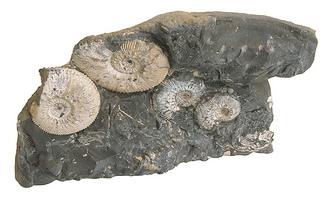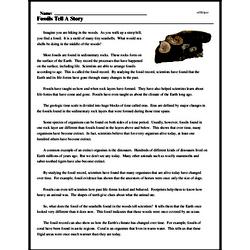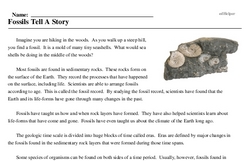Fossils Tell A Story
Imagine you are hiking in the woods. As you walk up a steep hill, you find a fossil. It is a mold of many tiny seashells. What would sea shells be doing in the middle of the woods?
Most fossils are found in sedimentary rocks. These rocks form on the surface of the Earth. They record the processes that have happened on the surface, including life. Scientists are able to arrange fossils according to age. This is called the fossil record. By studying the fossil record, scientists have found that the Earth and its life-forms have gone through many changes in the past.
Fossils have taught us how and when rock layers have formed. They have also helped scientists learn about life-forms that have come and gone. Fossils have even taught us about the climate of the Earth long ago.
The geologic time scale is divided into huge blocks of time called eras. Eras are defined by major changes in the fossils found in the sedimentary rock layers that were formed during those time spans.
Some species of organisms can be found on both sides of a time period. Usually, however, fossils found in one rock layer are different than fossils found in the layers above and below. This shows that over time, many organisms have become extinct. In fact, scientists believe that for every organism alive today, at least one hundred others have become extinct.




